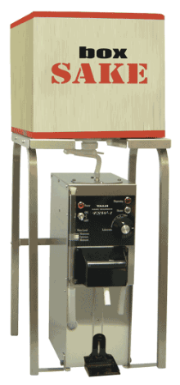Sake Tips – 5 Hot Tips For Better Hot Sake

1) How do I order good hot sake at a restaurant?
- First, not all restaurants are the same! But I would argue that most restaurants that have sake – hello sushi bars – have only one “House Hot Sake” offering. No way! Don’t go near that unless you’re doing – cough cough sake bombs! where the quality of sake does not matter! Instead ask the waitperson if they have a sake sommelier or if anybody could recommend what other “imported” Junmai or Honjozo sake on the menu that warms well. If they balk or say that they do not know then please reconsider your eatery! Ha! Now it’s time to go freestyle. Look at the sake offerings and if you see any descriptions for rich, ricy, full-bodied sakes select one of those. Sometimes “dry” sakes can heat a little hot! Rather look for a lower SMV and go with that! (Maybe look for Karatamba, Suigei, Otokoyama, and or most Junmai and Honjozo sakes from Japan! I repeat from Japan!) (Also please see our Top Ten Warming Sakes List and refer to that in a restaurant pinch!)
2) What is the best “Hot” temperature?
- Hot can be about ten different temperature zones! It can be from luke warm to boiling hot! If you are heating your sake I say go slow! Start playing around in the warm zone first! If you microwave – ahhhhhhhhhhhhhh! (sorry) – then start with 10 seconds. Take a sip and let the sake speak to you! Do you want it to be hotter? Each brew has a sweet spot when it comes to temperature. It’s that point where the sake goes from being a sake to being a heat! You can still taste the rice and water loveliness at this temp, but a little hotter all you taste is the temperature – hot! Most brews open up at the right temp, and then they go boozy hot! The trick is to find that sweet spot, and each sake is different. I recommend a star technique. Taste the sake at room temp. Maybe give it a three out of five stars. Then warm it. You may just taste a four or a five, and then the hotter it gets it may slip back to a two or even a one. Heating sake is a process, but a very enjoyable one!

3) What is the best vessel to warm sake in?
- Well! I’m going to have to go right back to the source and history of the sake industry. If anybody were to devise or create a better vessel for heating sake it would be the Japanese, and they pretty much have concluded that the chimney shaped “Tokkuri” is the best vessel. Why? When you heat your sake you are creating a chemical reaction and certain elements flee before others and this creates and imbalance in the remaining fluid. The final product of sake is 80% water. And water and alcohol do different things when heat is applied! Point being the tall chimney shaped Tokkuri keeps the balance better. In most instances it’s also concaved on the bottom which means an air pocket is trapped that gives the actual temperature of the sake inside the tokkuri and not the water temperature. In a pinch you want warm sake in a 300ml sake bottle or a little vase. (I’ve even slummed it with one of the top brewers in Japan who put sake in an electric teakettle!)
4) What sakes are best for warming?
- If we had to go by categories I would say that the “Honjozo and Junmai” categories are the best brews to warm. Some would argue that “futsushu” or table sake is also a good category, but sometimes these sakes can be a little too unbalanced and blemishes come forth with heat! My own personal rule of thumb is that sakes that have more body are better for warming. I like rich sakes! I like slightly rich-sweet brews as they act as more of a thoat coat when heated. Many folks like dry sakes to heat, but some are too dry and they quickly turn to boozy hot sakes when under flame. The higher acidity of a sake also plays a bigger role when the sake is heated. The higher the acidity the more likely you will get a “hotter” sake. There is a large contingency of drinkers who like heating Yamahai and Kimoto sakes. If you like the funk factor this would suit you, as heat brings forth more gaminess! The chunkier the brew the more it gets chunky with heat. Think rich, round, and velvety sakes to bring to heat!
5) Where can I make a mistake when warming sakes?
- You can’t! Well you can if you go crazy with heat! Basically you can kill a brew if you make it too hot! It’s that simple. You physically change the make up of the sake. The best way to “taste” this is by super heating a brew and then let it come to room temperature. Then compare it to the same sake that was not super heated! It’s quite a difference. In terms of what sake to warm you can never really go wrong! Sure some super premium sakes like ultra daiginjos should’t be warmed, but why not! I say warm them all. The key word being warm! You don’t need to race to piping hot! Some of my favorite sakes to warm are very out of the box. I love warming nama genshu sakes! For reals! Sometimes a big fruity sake gets too hot or acidically confused, but sometimes it turns into a wonderful flavor. The point is to try them all! Especially if you have a favorite sake. Try warming it! You may find a depth or layer of flavor that you never knew existed.

